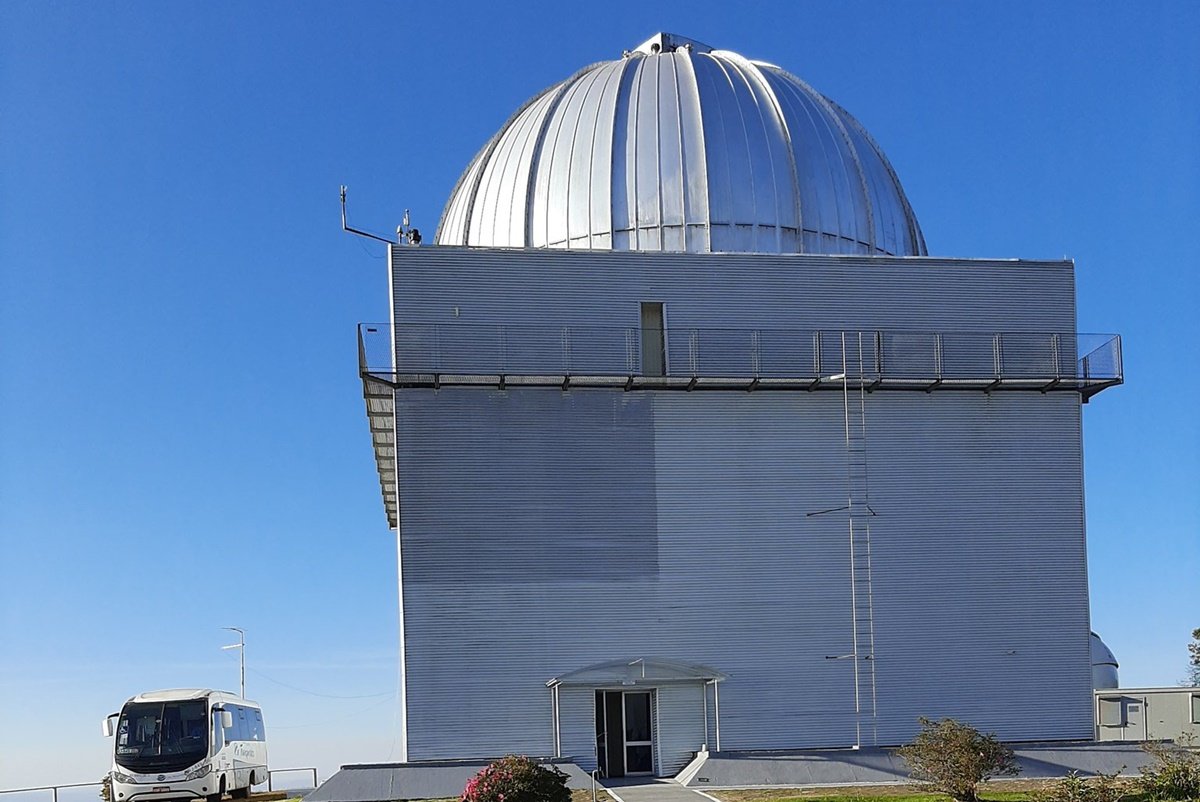Every week, TecMundo this #AstroMiniBR Bring together five interesting and fun astronomical curiosities produced by Twitter profile contributors to spread the knowledge of this oldest science!
#1: Galactic Race
With the arrival of James Webb, I think it’s best not to make too much fanfare with “the farthest galaxy”.
From now on it will be once a day. madness madness madness.
Maisie’s Galaxy was launched today, and if confirmed, it would be 13.4 billion years in the past. #AstroMiniBR pic.twitter.com/HGnK56H2m2
— Thiago S Gonçalves (@thiagosgbr) 26 July 2022
HE James Webb Space Telescope (JWST) NASA has been in full operation for several days and is already observing the distant Universe in an extraordinary way. In the first two weeks since the first JWST images and scientific data became available for astronomers to analyze, several groups of researchers have reported a number of preliminary findings, including several candidates for what may be the most distant galaxy ever seen.
For extragalactic astrophysics, this has been the main topic of scientific publications in recent days, and it doesn’t seem to show any signs of cooling in the coming weeks. Among the most distant candidate galaxies ever discovered was the Maisie galaxy (abbreviation), discovered this week in collaboration with CEERS. Cosmic Evolution Early Release Science Research).
The researchers responsible for the discovery estimate that the galaxy was observed as it was when the Universe was only 290 million years old. These discoveries lay the foundation for our understanding more and more about the early Universe and how the first structures were formed.
#2: Seeing the old as the new
HE @NASAWebb revealed ancient galaxies ?????????
but despite being formed in the first billion years of the Universe, the images appear to be of young galaxies, as their light travels from all space to Earth.#AstroMiniBR
{c} Cosmic Front (@NHK_PR)pic.twitter.com/InmQ5GE1rX— yanna martins franco (@martins_yanna) 28 July 2022
Every astronomy lover knows that the farther we look into the Universe, the further we look into the past. This is because the speed of light is limited and it takes a time corresponding to the distance to reach our observing instruments. For example, a galaxy two million light-years away looks roughly the same as it did two million years ago, because that’s when the photons we see today left.
To put it bluntly, when telescopes observe light from distant galaxies, they don’t really look back in time because there is no longer the past, but the telescopes look at the current pattern, i.e. the present of a beam of light. This is exactly what JWST can do: by looking at the current state of the photon beam emanating from a distant galaxy, it is possible to infer what the galaxy that emitted it was billions of years ago.
The animation above shows exactly this process, in which a baby evolved over time is observed through a telescope, just like the light that comes to the present day.
#3: The biggest telescope in Brazil
?? This is Perkin-Elmer, the largest 1.6-metre telescope on Brazilian soil!
It is located at the Pico dos Dias Observatory in Brasópolis – MG and is where many astronomers make observations for their research.
Quality science made here in Brazil!#AstroMiniBR pic.twitter.com/LKyW3qGG3U
— Thiago Flaulhabe (@TFlaulhabe) 26 July 2022
The Perkin-Elmer telescope is the largest and main telescope in the Picos dos Dias Observatory, located at an altitude of 1,864 meters in Brazópolis in the state of Minas Gerais. Operated and maintained by the National Astrophysical Laboratory (LNA), the telescope has a 1.6-metre primary mirror and has been in operation since 1981.
Perkin-Elmer remotely tracks targets in the night sky under the control of computer software and focuses primarily on photometry, polarimetry and spectroscopy.
#4: Relative orbital velocities of planets in the Solar System
How fast do Solar System planets move through space? ????
see your animation @physicsJ which shows the relative orbital velocity of the planets. Note the relative rotation and orbital inclination of each!#AstroMiniBR pic.twitter.com/Ss923HuEfE
– Patricia Cruz, PhD (@patyccruz2) 26 July 2022
In astronomy and physics, in gravitational systems, the orbital velocity of an astronomical object or body is defined as its orbital velocity around its center of gravity (or if one object is much larger than the other). , center of mass) of the system.
The velocity is inversely proportional to the orbital radius and the translation period of the celestial body, that is, the farther away it moves, the slower it moves in space on its orbital path. In the Solar System planetary race, Mercury, which is also closest to the Sun, is the winner in terms of speed, moving at an orbital speed of about 47.87 km/s.
In case you were wondering, we’ve included a list of the orbital velocities of other planets below:
- Venus, 35.02 km/h;
- Earth, 29.78 km/h;
- Mars, 24,077 km/s;
- Jupiter, 13.07 km/h;
- Saturn, 9.69 km/h;
- Uranus, 6.81 km/s;
- Neptune at 5.43 km/h.
#5: Apollo 15 adventure
Apollo 15 was launched on July 26, 1971, which led to the fourth lunar landing and was the first to use the Lunar Rover. This instrument allowed astronauts to explore a larger area of the Moon.#AstroMiniBR pic.twitter.com/Vv61IxqV5a
— Mirian Castejon?? (@MirianCastejon) 26 July 2022
The Apollo 15 mission was the ninth manned mission in NASA’s Apollo program and the fourth mission to land on the Moon. The mission began on July 26, 1971 and ended on August 7 of the same year, characterized as the program’s first mission to stay on the Moon longer and more scientifically focused than previous missions.
The Apollo 15 crew also included three astronauts, David Scott, Alfred Worden, and James Irwin. Exploration of the lunar surface took place between July 30 and August 2, and was the first to use the Lunar Rover Vehicle (LRV): an articulated vehicle designed to walk on the Moon, allowing astronauts to travel much farther. Lunar module more than was possible on previous landings.
In total, the astronauts spent more than 180 hours on the Moon’s surface and conducted various extravehicular activities and scientific experiments before returning safely to the Earth’s surface.
Source: Tec Mundo
I am Bret Jackson, a professional journalist and author for Gadget Onus, where I specialize in writing about the gaming industry. With over 6 years of experience in my field, I have built up an extensive portfolio that ranges from reviews to interviews with top figures within the industry. My work has been featured on various news sites, providing readers with insightful analysis regarding the current state of gaming culture.













